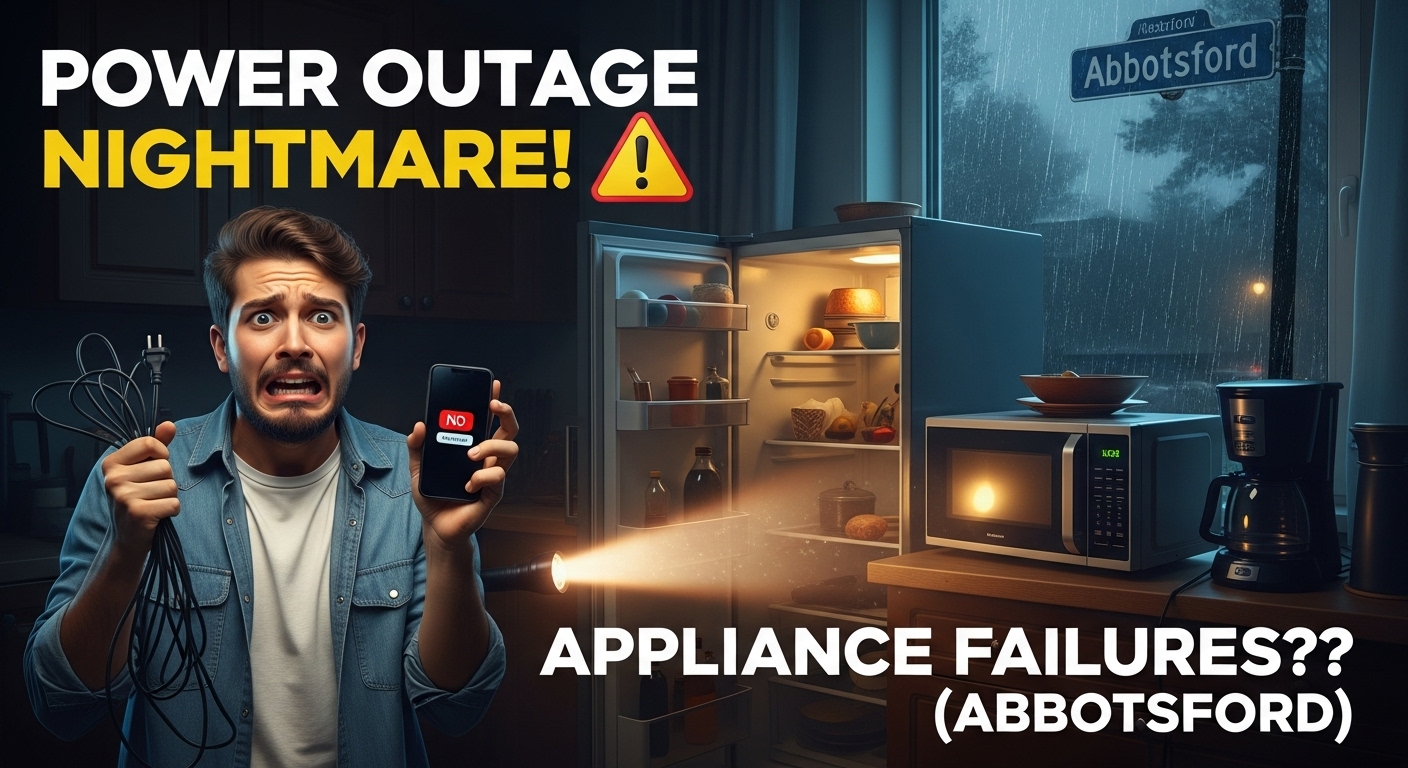Power Outage Appliance Recovery: How to Safely Restart Your Home Appliances After Electrical Disruptions in Abbotsford
Worried about your appliances after that sudden power outage hit your Abbotsford home last night? Don’t panic – we’ll walk you through the essential steps to safely assess, restart, and protect your valuable home appliances from electrical damage during recovery.Picture this: you’re settling in for a cozy evening in your Abbotsford home when suddenly everything goes dark. The familiar hum of appliances stops, and you’re left wondering what just happened to your electrical system. Power outages in the Fraser Valley aren’t uncommon, especially during those intense Pacific storms that roll through British Columbia. But here’s what many homeowners don’t realize – the real risk to your appliances often comes not during the outage itself, but in those critical moments when the power returns.When electricity suddenly surges back into your home’s systems, it can create voltage spikes that fry sensitive electronics faster than you can say “circuit breaker.” Your expensive refrigerator, that brand-new smart TV, or even your trusty washing machine could become casualties of an improper restart sequence. The good news? With the right knowledge and a systematic approach, you can protect your investment and get your household running smoothly again.Whether you’re dealing with a brief flicker or an extended blackout, understanding proper appliance recovery procedures isn’t just about convenience – it’s about safeguarding thousands of dollars worth of home equipment. From immediate safety protocols to advanced smart home recovery techniques, this comprehensive guide covers everything you need to know about bringing your appliances back online safely after electrical disruptions in the Abbotsford area.
Key Outtakes:
- Always wait 5-10 minutes after power restoration before reconnecting appliances to prevent surge damage from unstable electrical systems
- Unplug all non-essential electronics immediately during outages, but keep refrigerators and freezers connected while avoiding opening their doors
- Follow a graduated reconnection strategy by prioritizing essential appliances first, then gradually adding other devices over 15-minute intervals
- Check circuit breakers and visually inspect all appliances for burn marks, unusual odors, or visible damage before attempting to restart them
- Contact professional appliance repair services in the Vancouver area immediately if multiple appliances show signs of electrical damage or fail to function properly
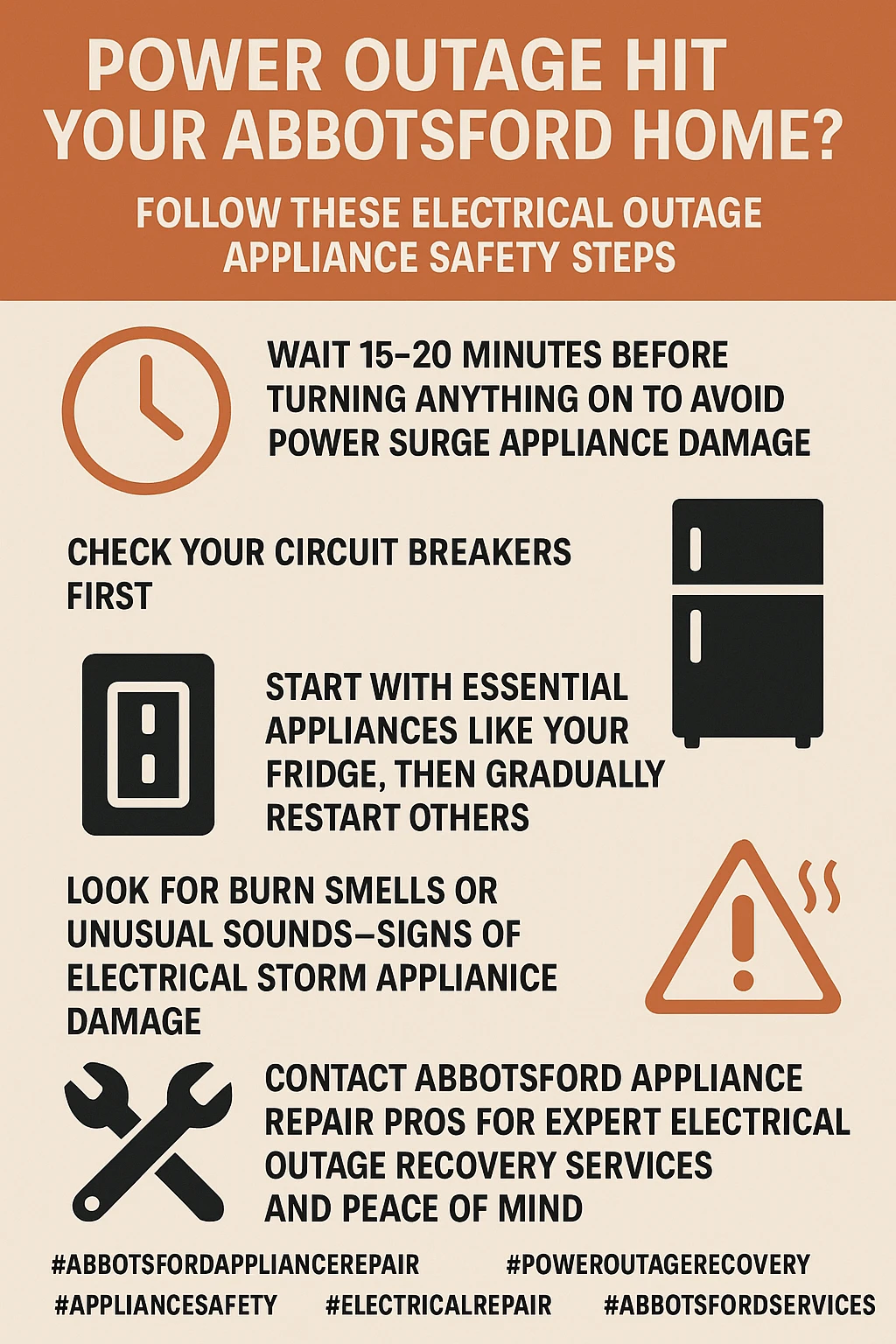
Understanding Power Outage Risks and Immediate Response
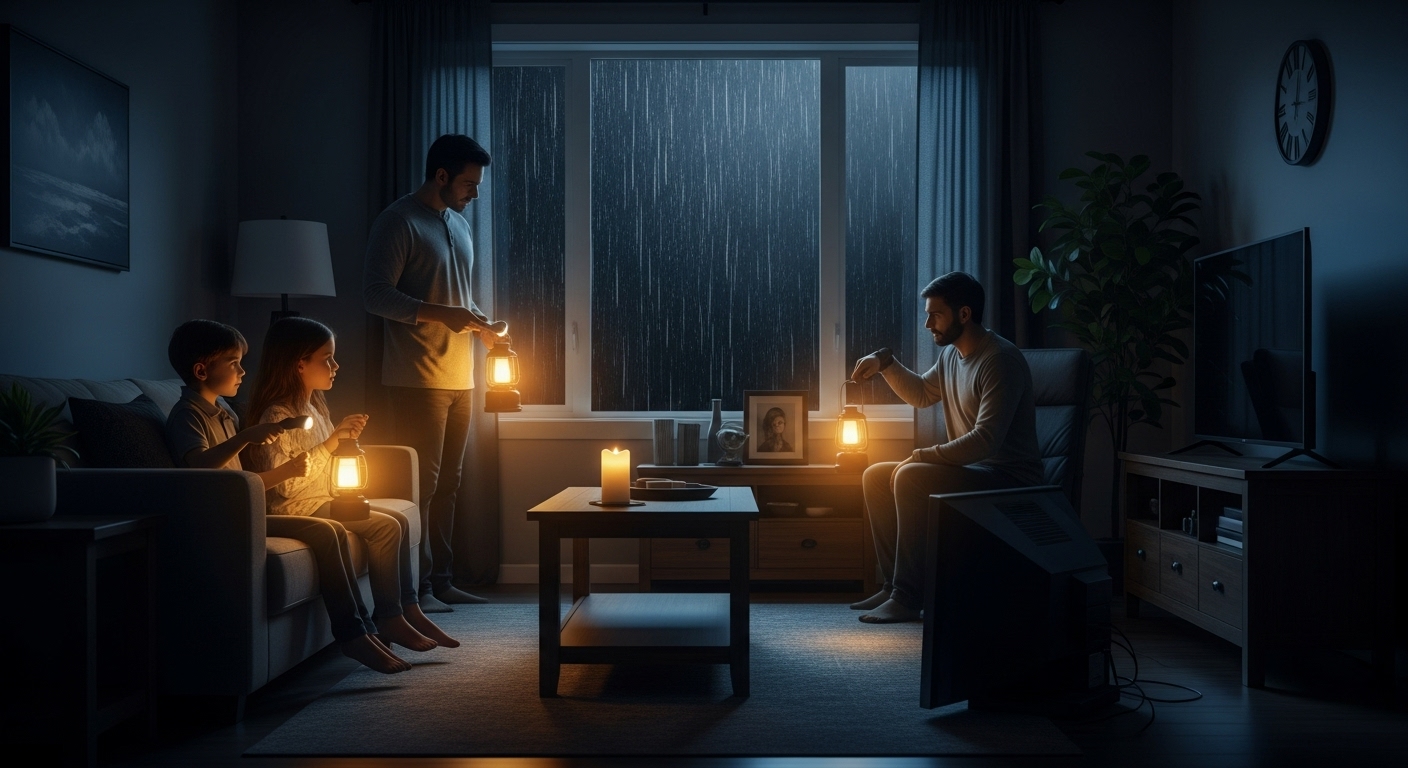 When the lights go out in your Abbotsford home, your first instinct might be to grab a flashlight and wait it out. However, those crucial first moments determine whether your appliances emerge unscathed or become expensive repair projects. Power outages don’t just interrupt your daily routine – they create a cascade of electrical stress that can damage sensitive components throughout your home. Understanding these risks helps you take the right protective steps before problems escalate.The moment your power cuts out, every appliance in your home enters a vulnerable state. Electronics with memory functions lose their settings, heating and cooling systems stop mid-cycle, and refrigeration equipment begins warming up. But here’s the kicker – it’s not the outage itself that typically causes the most damage. According to safety experts, the real danger comes when power returns, often accompanied by voltage surges that can overwhelm delicate circuitry.Modern appliances contain sophisticated electronic controls that weren’t designed to handle the electrical chaos that accompanies power restoration. These systems expect clean, stable electricity, not the erratic voltage swings common during grid recovery. When utilities flip the switch back on, that initial surge can fry circuit boards, damage motors, and leave you with appliances that either don’t work at all or operate erratically. Smart homeowners in the Fraser Valley have learned that a few preventive steps during an outage can save thousands in repair costs later.
When the lights go out in your Abbotsford home, your first instinct might be to grab a flashlight and wait it out. However, those crucial first moments determine whether your appliances emerge unscathed or become expensive repair projects. Power outages don’t just interrupt your daily routine – they create a cascade of electrical stress that can damage sensitive components throughout your home. Understanding these risks helps you take the right protective steps before problems escalate.The moment your power cuts out, every appliance in your home enters a vulnerable state. Electronics with memory functions lose their settings, heating and cooling systems stop mid-cycle, and refrigeration equipment begins warming up. But here’s the kicker – it’s not the outage itself that typically causes the most damage. According to safety experts, the real danger comes when power returns, often accompanied by voltage surges that can overwhelm delicate circuitry.Modern appliances contain sophisticated electronic controls that weren’t designed to handle the electrical chaos that accompanies power restoration. These systems expect clean, stable electricity, not the erratic voltage swings common during grid recovery. When utilities flip the switch back on, that initial surge can fry circuit boards, damage motors, and leave you with appliances that either don’t work at all or operate erratically. Smart homeowners in the Fraser Valley have learned that a few preventive steps during an outage can save thousands in repair costs later.
Immediate Protective Actions During Power Outages
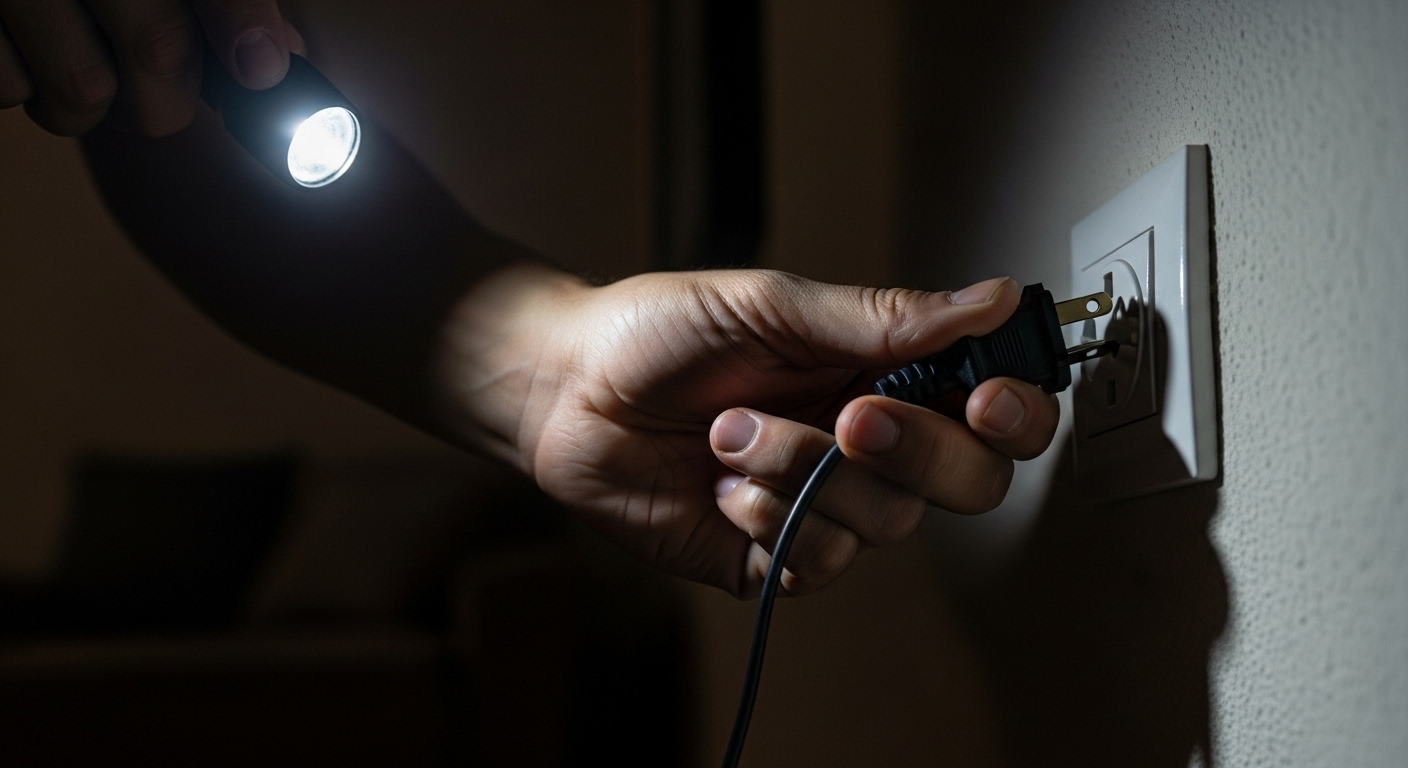 The first few minutes after your power goes out set the stage for how successfully your appliances will recover. Think of this period as your window of opportunity to minimize potential damage and protect your most valuable equipment. Quick, decisive action during these moments can mean the difference between a minor inconvenience and a major appliance replacement project. Your priority should be immediately unplugging sensitive electronics throughout your home. Televisions, computers, microwaves, gaming consoles, and any device with digital displays need to be disconnected from power sources. As recommended by electrical safety experts, turning off all tools, appliances and electronic equipment prevents damage from power surges when electricity is restored. This might seem like a hassle in the dark, but it’s far easier than explaining to your insurance company why you didn’t take basic protective measures.However, don’t unplug everything. Your refrigerator and freezer should remain connected to power, but commit to keeping their doors closed. Opening these appliances during an outage releases precious cold air and forces the systems to work harder when power returns. A properly sealed refrigerator can maintain safe temperatures for about four hours, while a full freezer stays frozen for 24 to 48 hours depending on how full it is. Use this time to your advantage by planning your reconnection strategy rather than checking on your frozen goods every few minutes.Circuit breaker assessment represents another critical immediate step. Head to your electrical panel with a flashlight and check whether the outage affects just your home or the entire neighborhood. If your neighbors still have power, you might have tripped a main breaker or experienced a localized problem. Documenting any tripped breakers now helps electricians or repair technicians diagnose problems later. Remember, if you’re dealing with a widespread outage, you’re in a waiting game that requires patience and preparation.Finally, reduce the electrical load on your system by turning off all lights except one inside and one outside your home. This simple step serves two purposes: it reduces the demand on electrical systems when power returns, and it provides a clear indicator when electricity is restored. Utility crews also use these lights as visual confirmation that power has been successfully restored to homes in the area.
The first few minutes after your power goes out set the stage for how successfully your appliances will recover. Think of this period as your window of opportunity to minimize potential damage and protect your most valuable equipment. Quick, decisive action during these moments can mean the difference between a minor inconvenience and a major appliance replacement project. Your priority should be immediately unplugging sensitive electronics throughout your home. Televisions, computers, microwaves, gaming consoles, and any device with digital displays need to be disconnected from power sources. As recommended by electrical safety experts, turning off all tools, appliances and electronic equipment prevents damage from power surges when electricity is restored. This might seem like a hassle in the dark, but it’s far easier than explaining to your insurance company why you didn’t take basic protective measures.However, don’t unplug everything. Your refrigerator and freezer should remain connected to power, but commit to keeping their doors closed. Opening these appliances during an outage releases precious cold air and forces the systems to work harder when power returns. A properly sealed refrigerator can maintain safe temperatures for about four hours, while a full freezer stays frozen for 24 to 48 hours depending on how full it is. Use this time to your advantage by planning your reconnection strategy rather than checking on your frozen goods every few minutes.Circuit breaker assessment represents another critical immediate step. Head to your electrical panel with a flashlight and check whether the outage affects just your home or the entire neighborhood. If your neighbors still have power, you might have tripped a main breaker or experienced a localized problem. Documenting any tripped breakers now helps electricians or repair technicians diagnose problems later. Remember, if you’re dealing with a widespread outage, you’re in a waiting game that requires patience and preparation.Finally, reduce the electrical load on your system by turning off all lights except one inside and one outside your home. This simple step serves two purposes: it reduces the demand on electrical systems when power returns, and it provides a clear indicator when electricity is restored. Utility crews also use these lights as visual confirmation that power has been successfully restored to homes in the area.
Safe Appliance Restart Procedures After Power Restoration
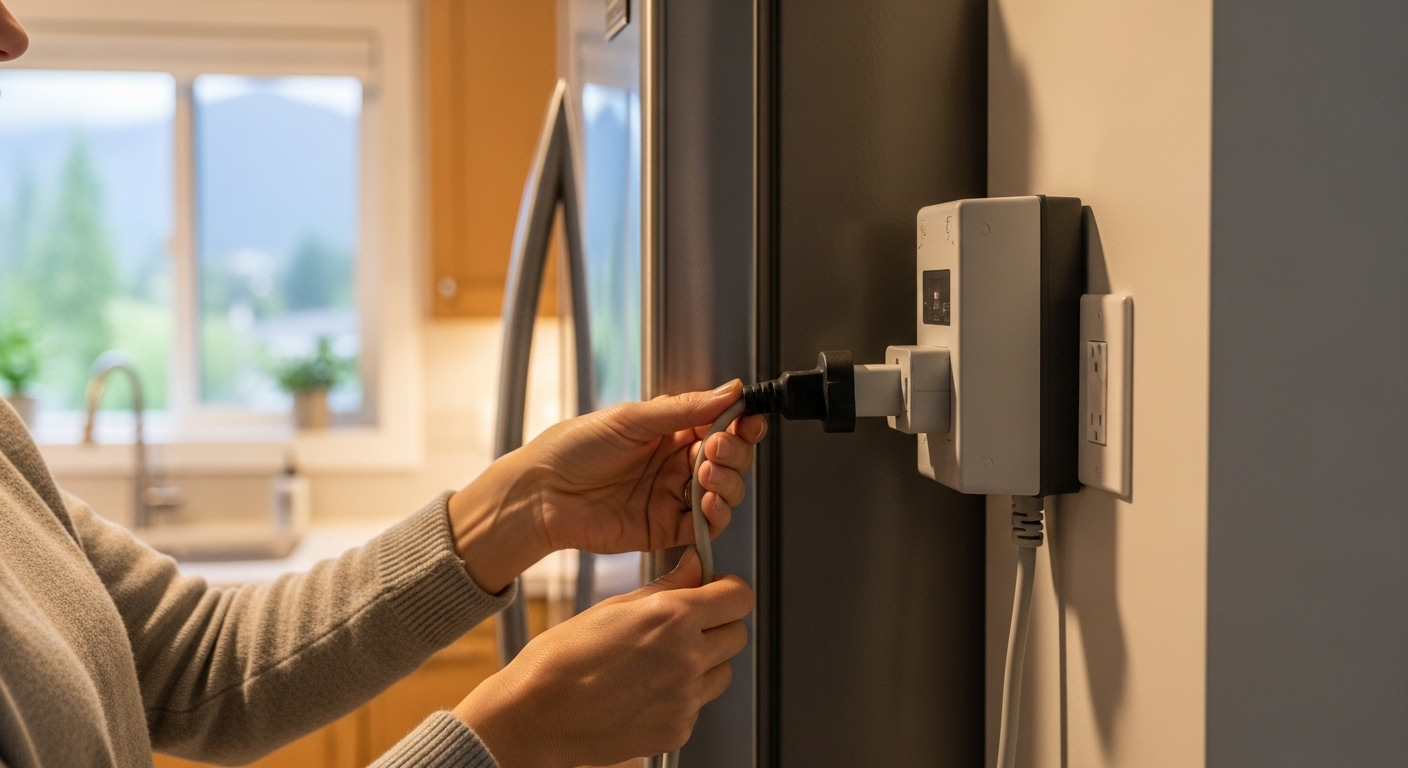 When those lights finally flicker back on, resist the urge to immediately plug everything back in and return to normal. This critical transition period requires patience and a methodical approach that protects your appliances from the voltage instabilities common during power restoration. Many homeowners make the mistake of treating power restoration like everything’s instantly back to normal, but electrical systems need time to stabilize after major disruptions. The most important rule for appliance recovery involves waiting before reconnecting devices. Electrical safety guidelines consistently emphasize this waiting period because power can surge on and then cut out all over again when first restored. Plan on waiting at least 5-10 minutes after power returns before plugging anything back in. During this time, monitor your lights for flickering, dimming, or other signs of electrical instability that indicate the grid is still settling down.Use this waiting period to develop a systematic reconnection strategy. Essential appliances should come first, particularly your heating and cooling systems, followed by refrigeration equipment. Your HVAC system and refrigerator work hardest when restarting after an outage, so giving them priority access to stable power prevents strain on both the electrical system and the appliance motors. Wait another 10-15 minutes before adding other appliances to avoid overloading circuits during the recovery phase.Graduated reconnection prevents the electrical equivalent of everyone rushing through a door at once. As power restoration experts recommend, giving the electrical system a chance to stabilize before reconnecting tools and appliances helps prevent damage from voltage fluctuations. Add one or two appliances at a time, allowing the electrical system to adjust to each new load before introducing the next one. This methodical approach might feel slow, but it’s infinitely faster than dealing with multiple appliance failures.During reconnection, pay attention to how each appliance responds. Normal startup sounds, proper indicator lights, and expected operation cycles all signal successful recovery. However, unusual noises, error messages, flickering displays, or failure to start properly indicate potential surge damage that requires immediate attention. Document any problems you notice, as this information proves valuable for repair technicians and insurance claims.
When those lights finally flicker back on, resist the urge to immediately plug everything back in and return to normal. This critical transition period requires patience and a methodical approach that protects your appliances from the voltage instabilities common during power restoration. Many homeowners make the mistake of treating power restoration like everything’s instantly back to normal, but electrical systems need time to stabilize after major disruptions. The most important rule for appliance recovery involves waiting before reconnecting devices. Electrical safety guidelines consistently emphasize this waiting period because power can surge on and then cut out all over again when first restored. Plan on waiting at least 5-10 minutes after power returns before plugging anything back in. During this time, monitor your lights for flickering, dimming, or other signs of electrical instability that indicate the grid is still settling down.Use this waiting period to develop a systematic reconnection strategy. Essential appliances should come first, particularly your heating and cooling systems, followed by refrigeration equipment. Your HVAC system and refrigerator work hardest when restarting after an outage, so giving them priority access to stable power prevents strain on both the electrical system and the appliance motors. Wait another 10-15 minutes before adding other appliances to avoid overloading circuits during the recovery phase.Graduated reconnection prevents the electrical equivalent of everyone rushing through a door at once. As power restoration experts recommend, giving the electrical system a chance to stabilize before reconnecting tools and appliances helps prevent damage from voltage fluctuations. Add one or two appliances at a time, allowing the electrical system to adjust to each new load before introducing the next one. This methodical approach might feel slow, but it’s infinitely faster than dealing with multiple appliance failures.During reconnection, pay attention to how each appliance responds. Normal startup sounds, proper indicator lights, and expected operation cycles all signal successful recovery. However, unusual noises, error messages, flickering displays, or failure to start properly indicate potential surge damage that requires immediate attention. Document any problems you notice, as this information proves valuable for repair technicians and insurance claims.
Surge Protection and Electrical Safety Measures
Power surges represent the invisible enemy of modern appliances, striking without warning and leaving expensive damage in their wake. Understanding how surges occur and implementing protection strategies can save Abbotsford homeowners thousands of dollars in appliance replacement costs. These electrical events happen more frequently than most people realize, and protecting against them requires both immediate actions and long-term planning
